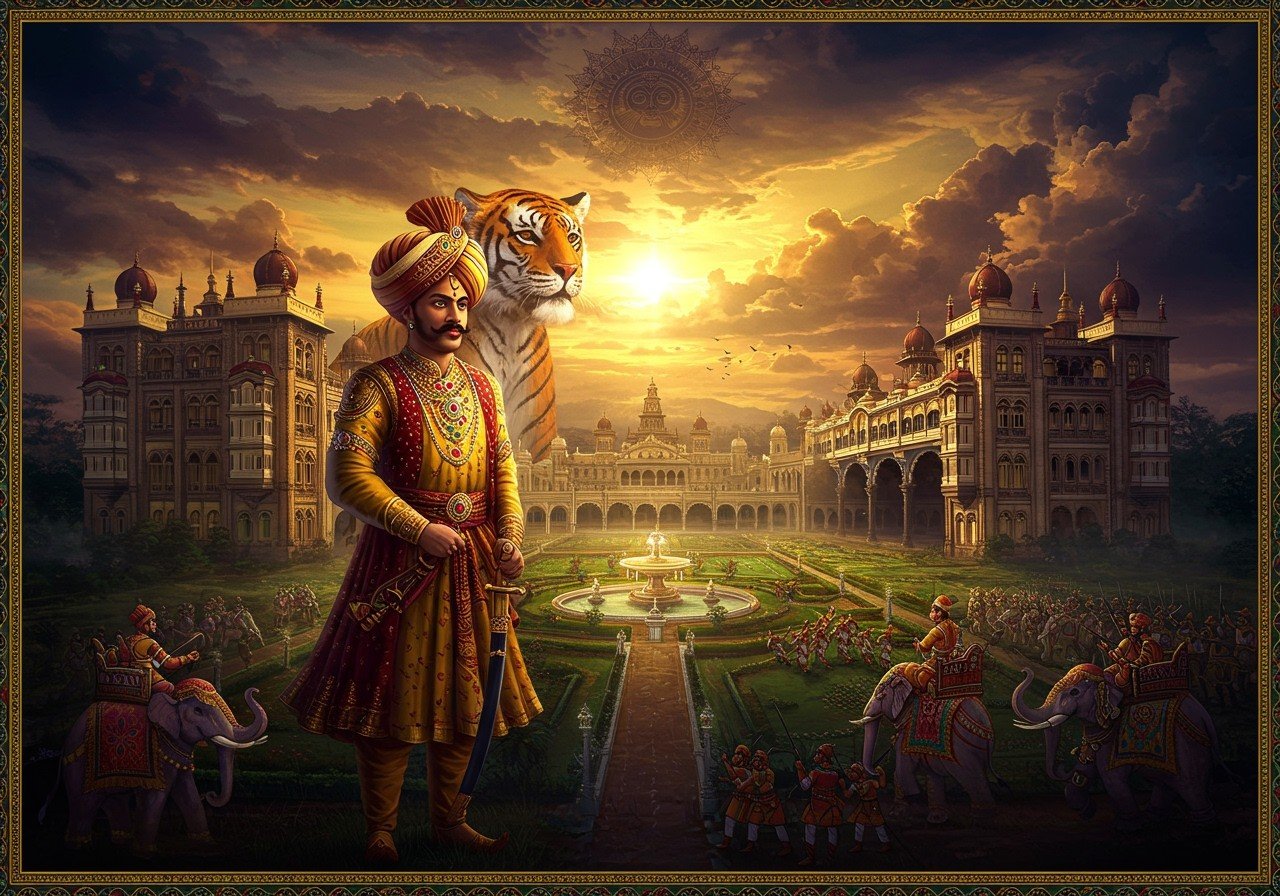
The Kingdom of Mysore holds a significant place in Indian history, renowned for its rich culture, progressive administration, and formidable military strength. This article delves into the captivating history of Mysore, tracing its ascent to power, highlighting the key rulers who shaped its destiny, and exploring its eventual integration into modern India. Understanding Mysore’s history provides valuable insights into the cultural and political landscape of Southern India.
Origins and Establishment of the Kingdom of Mysore
The Kingdom of Mysore was established in 1399 by Yaduraya Wodeyar in southern India, near the present-day city of Mysore. Initially, it functioned as a feudatory of the Vijayanagara Empire until the empire’s decline in 1565. The kingdom was ruled by the Wodeyar family and later witnessed substantial shifts in its territorial boundaries and governance. Notable figures include Hyder Ali and Tipu Sultan, who held effective power from 1761 to 1799. The kingdom persisted until 1950. Historical sources comprise inscriptions, palace records, and contemporary Kannada literature.
- Yaduraya’s Lineage: Yaduraya faced initial challenges in consolidating his control over the region, navigating conflicts with neighboring chieftains and establishing his authority. He laid the groundwork for the Wodeyar dynasty, which would rule Mysore for centuries.
- Wodeyar Dynasty: The Wodeyar dynasty was instrumental in solidifying power and establishing the foundation for future expansion. Their rule marked a period of stability and growth for the kingdom, setting the stage for Mysore’s prominence in Southern India.
- Strategic Location: Mysore’s strategic location played a crucial role in its economic and military development. Its position facilitated trade and provided defensive advantages, contributing to its growing strength.
- Governance Model: The early Wodeyar rulers implemented an effective administrative structure, emphasizing efficient governance and revenue collection. This focus on administration laid the groundwork for a prosperous and well-organized kingdom.
- Cultural Policies: The Wodeyars promoted local traditions and provided patronage to temples, fostering a vibrant cultural environment. Their support for the arts and religious institutions helped preserve and enrich the region’s cultural heritage.
- Alliances and Conflicts: Early alliances and conflicts with neighboring states shaped the kingdom’s future trajectory and territorial boundaries. These interactions played a crucial role in defining Mysore’s political landscape and its relationships with other powers.
Expansion and Golden Age under the Wodeyars
The Wodeyar dynasty oversaw significant expansion of the kingdom’s territory and influence, ushering in a golden age for Mysore.
- Raja Wodeyar I (1578-1617): Raja Wodeyar I spearheaded the expansion of the kingdom’s territory, further solidifying Mysore’s position in the region. His reign was marked by strategic conquests and consolidation of power.
- Administrative Reforms: A focus on efficient governance and revenue collection characterized this period, contributing to the kingdom’s economic prosperity. Streamlined administration and effective tax policies helped fuel Mysore’s growth.
- Cultural Renaissance: The Wodeyars fostered a cultural renaissance, marked by significant contributions to art, literature, and architecture. Their patronage of the arts led to a flourishing of creative expression and intellectual pursuits.
- Trade and Commerce: Mysore flourished as a center of trade, facilitating economic growth and prosperity within the kingdom. Its strategic location and favorable trade policies attracted merchants and goods from far and wide.
- Military Alliances: Strategic military alliances shaped the kingdom’s territorial boundaries and influenced its political relations with neighboring states. These alliances were crucial for both defense and expansion.
- Iconic Structures: This era witnessed the construction of iconic structures like the Mysore Palace, showcasing the kingdom’s architectural prowess and grandeur. These architectural marvels stand as testaments to Mysore’s prosperity and cultural achievements.
- Socio-economic Impact: Land reforms and agricultural development initiatives improved the welfare of the local population, contributing to social stability and economic growth. These policies aimed to improve the lives of ordinary people and strengthen the kingdom’s foundation.
Hyder Ali and Tipu Sultan: Transformation and Conflict
The mid-18th century witnessed a period of significant transformation under Hyder Ali and his son, Tipu Sultan.
- Hyder Ali’s Rise (1761-1782): Known for his military acumen, Hyder Ali rose to prominence, modernizing the Mysore army and engaging in conflicts with the Marathas and the British East India Company. His leadership transformed Mysore into a major military power.
- Tipu Sultan’s Reign (1782-1799): Tipu Sultan continued his father’s legacy, further modernizing the military with advanced weaponry and fortifications. He fiercely resisted British expansion, becoming a symbol of resistance against colonial rule.
- Diplomatic Relations: Tipu Sultan actively pursued diplomatic alliances with foreign powers, including France, aiming to strengthen Mysore’s position against the British. His diplomatic efforts reflected his strategic vision and determination to maintain Mysore’s independence.
- Socio-economic Policies: Tipu Sultan implemented land reforms and promoted industrial development, aiming to improve the economic conditions within his kingdom. His policies reflected a focus on both economic growth and social welfare.
The Decline and Legacy of Mysore
The Fourth Anglo-Mysore War in 1799 marked a turning point, resulting in the defeat and death of Tipu Sultan. The British restored the Wodeyar dynasty as rulers under their suzerainty, marking the beginning of British control over Mysore.
Despite its eventual decline, the Kingdom of Mysore left an enduring legacy. Its contributions to art, architecture, administration, and military innovation significantly impacted Southern India’s history and culture. The legacy of rulers like Hyder Ali and Tipu Sultan, particularly their resistance against British colonialism, continues to inspire. Poojn.in offers a range of products that connect you to this rich heritage.
Explore authentic puja items and cultural goods reminiscent of the Kingdom of Mysore era at Poojn.in. Discover traditional brass and bronze items, pure silk vastrams, authentic kumkum and chandanam, intricately designed puja thalis, and high-quality camphor and sambrani for your spiritual practices. Incense sticks and sandalwood malas, reminiscent of the era, are also available. Poojn.in helps you honor and preserve the sacred traditions of South India.
Chamundeshwari Temple Mysore: Your Complete Visit Guide
Sri Bhoo Varahaswamy Temple, Kallahalli, Mysore: A Visitor’s Guide


